Dandruff in dogs is dead skin cells on the fur coat that’s clearly visible to the naked eye. Dandruff can be more visible on your dog’s skin and fur if their fur coat is black or dark brown. However, it is very common among dogs of all breeds and ages.
Dandruff in dogs is often referred to as seborrheic dermatitis and it’s common among humans as well as dogs. While it is not a sign of a serious skin disease it can cause your dog to itch, scratch and nibble on their skin, leading to secondary skin infections.
Did you know? Dogs can have different types of dandruffs
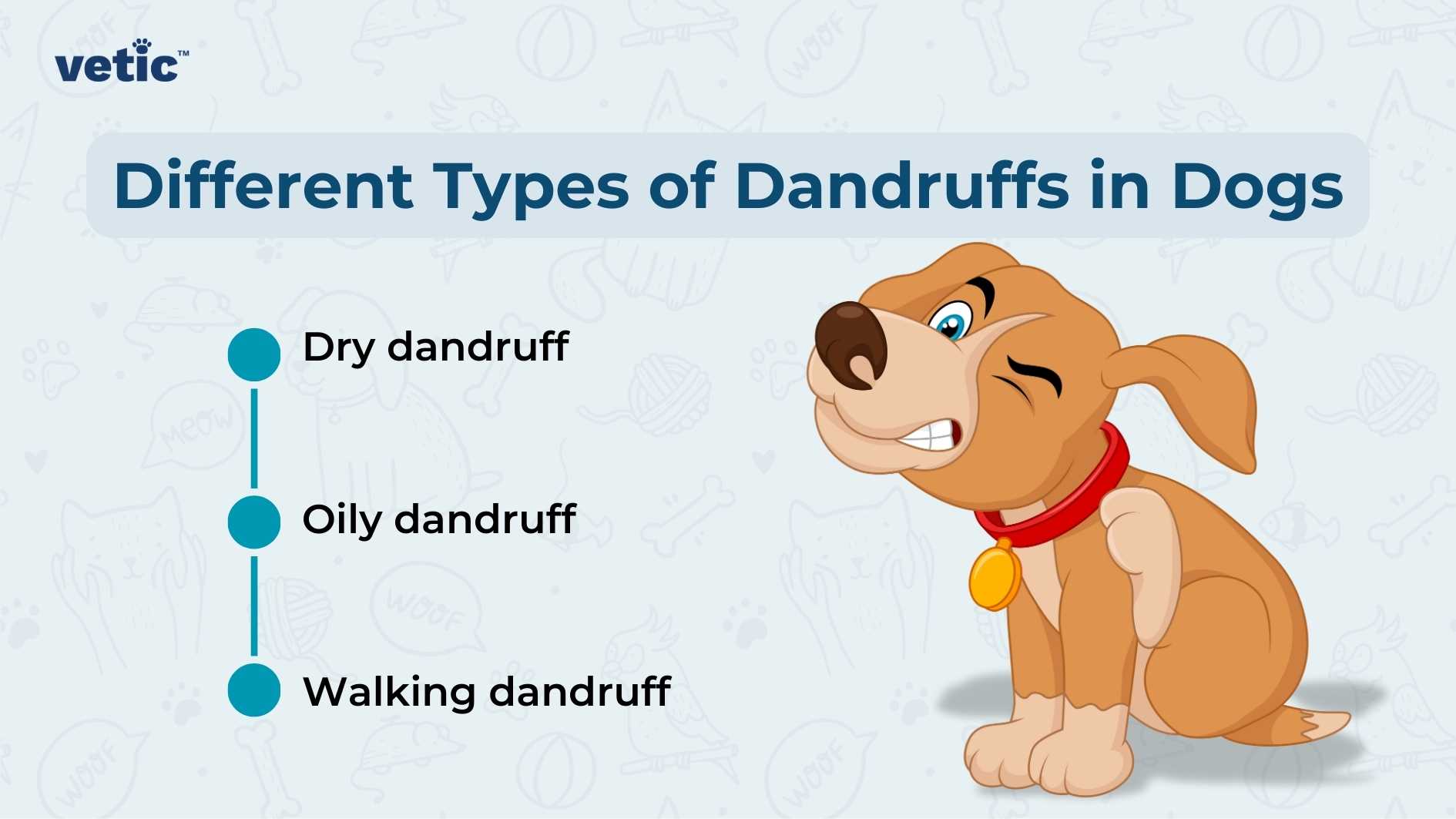
Dry dandruff
Dry dandruff is also known as seborrhea sicca, which appears as dry white flakes and crusty skin.
Oily dandruff
It is common among dogs in summer and monsoon months. The skin looks and feels oily, and may give off a weird smell.
Walking dandruff
Cheyletiella is a type of mite that causes “walking dandruff” in dogs.
What are the causes of dandruff in dogs?
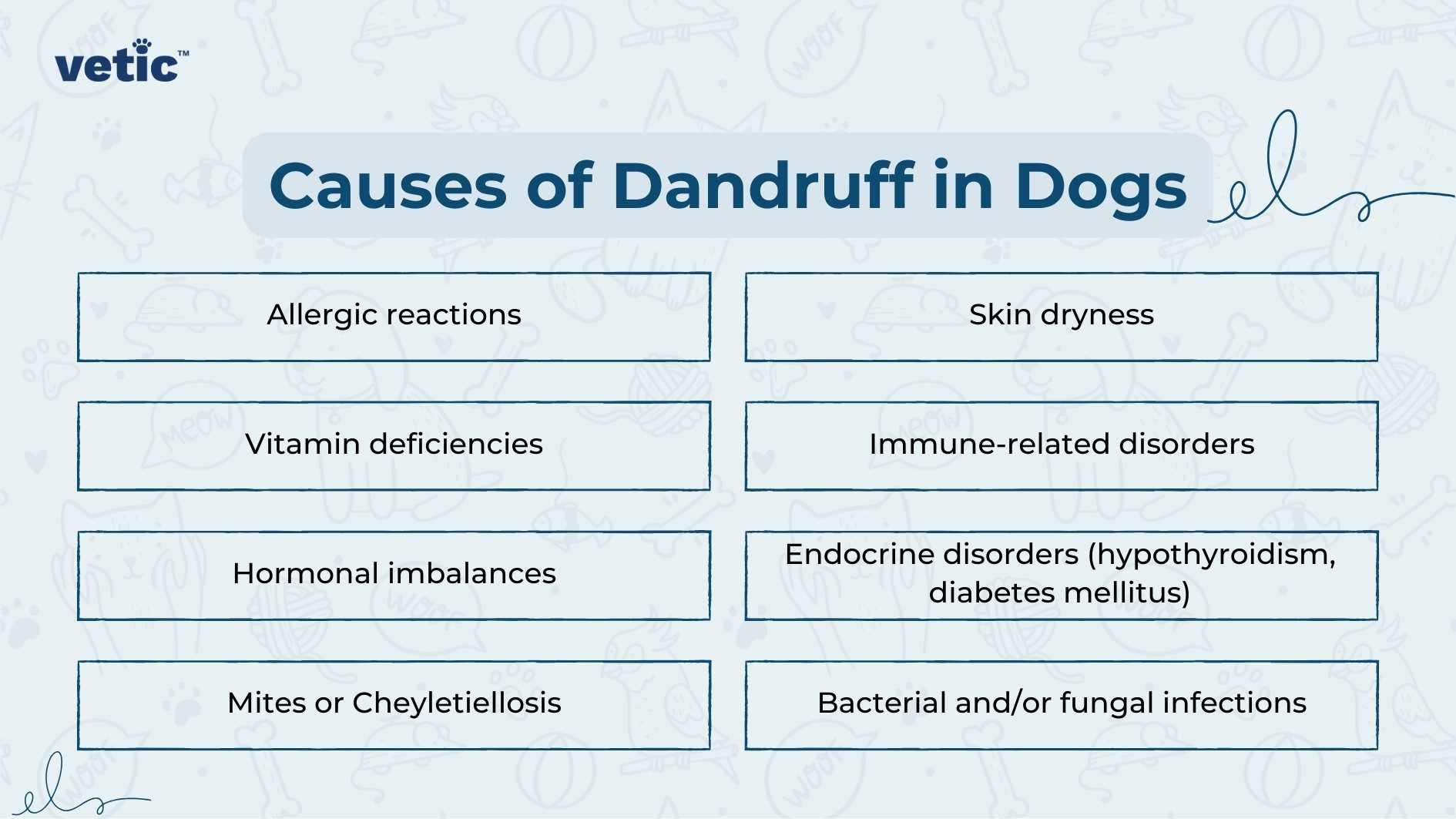
While we often attribute dandruff in dogs to dry skin, but that is not always the case. Dandruff in dogs is often caused by –
- Allergic reactions
- Vitamin deficiencies
- Immune-related disorders
- Hormonal imbalances
- Endocrine disorders (hypothyroidism, diabetes mellitus)
- Mites or Cheyletiellosis
- Bacterial and/or fungal infections
How is Dandruff in Dogs Diagnosed?
Dandruffs can be a sign of other underlying conditions of the skin, immune system or endocrine disorders. Each cause demands different treatment. So, diagnose the underlying cause of dandruff in dogs the veterinarian must –
- Physically examine your dog
- Inquire about the initial instance and how frequently your dog is bathed
- Ask about your dog’s grooming products, nutrition plan and water intake
The veterinarian may go for further testing if dandruff is a pervasive problem for your dog. The vet will –
- Do a skin scraping test to check for mites, lice and other ectoparasites
- Suggest allergy tests, especially if your dog has red bumps and excessive itchiness along with dandruff
- Run tests on your dog’s ear debris and skin to check for bacterial and fungal infections
At the same time, the veterinarian will recommend blood tests to see if your dog has any systemic condition that can result in dandruff. These systemic conditions are usually serious and chronic, and require medical attention. However, they may show minimal clinical signs such as changes in skin texture and dryness.
Your veterinarian might recommend –
- Complete blood count (CBC)
- Diabetes test
- Thyroid profile
- Cortisol levels
What is the Treatment for Dandruff in Dogs?
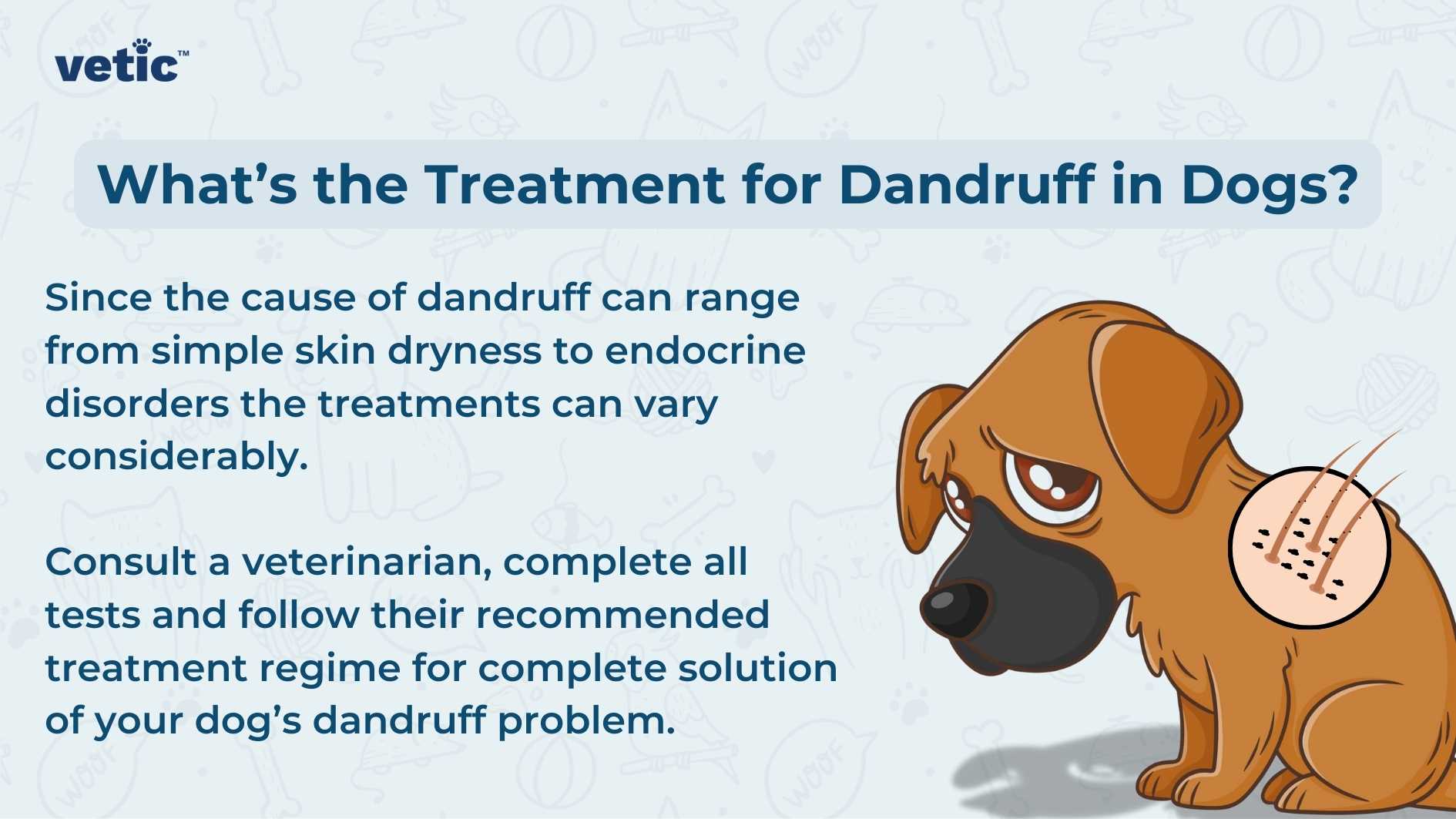
While many pet parents believe over-the-counter bathing shampoos and supplements are enough to get rid of dandruff in dogs, they don’t always work.
When dandruff is being caused by an endocrine diseases or metabolism disorder, the root cause needs to be treated to solve the dandruff problem. You can of course opt for over-the-counter soothing shampoos and sprays for your dog once your veterinarian has diagnosed the cause and given you the go-ahead for using the OTC products.
If the cause of your dog’s dandruff problem is mites or Cheyletiella, you will need a longer treatment regime. Mites can survive longer than 10 days on any surface. You will need to give all your pets medicated baths, preventive chews or spot-ons depending on their species, size and age.
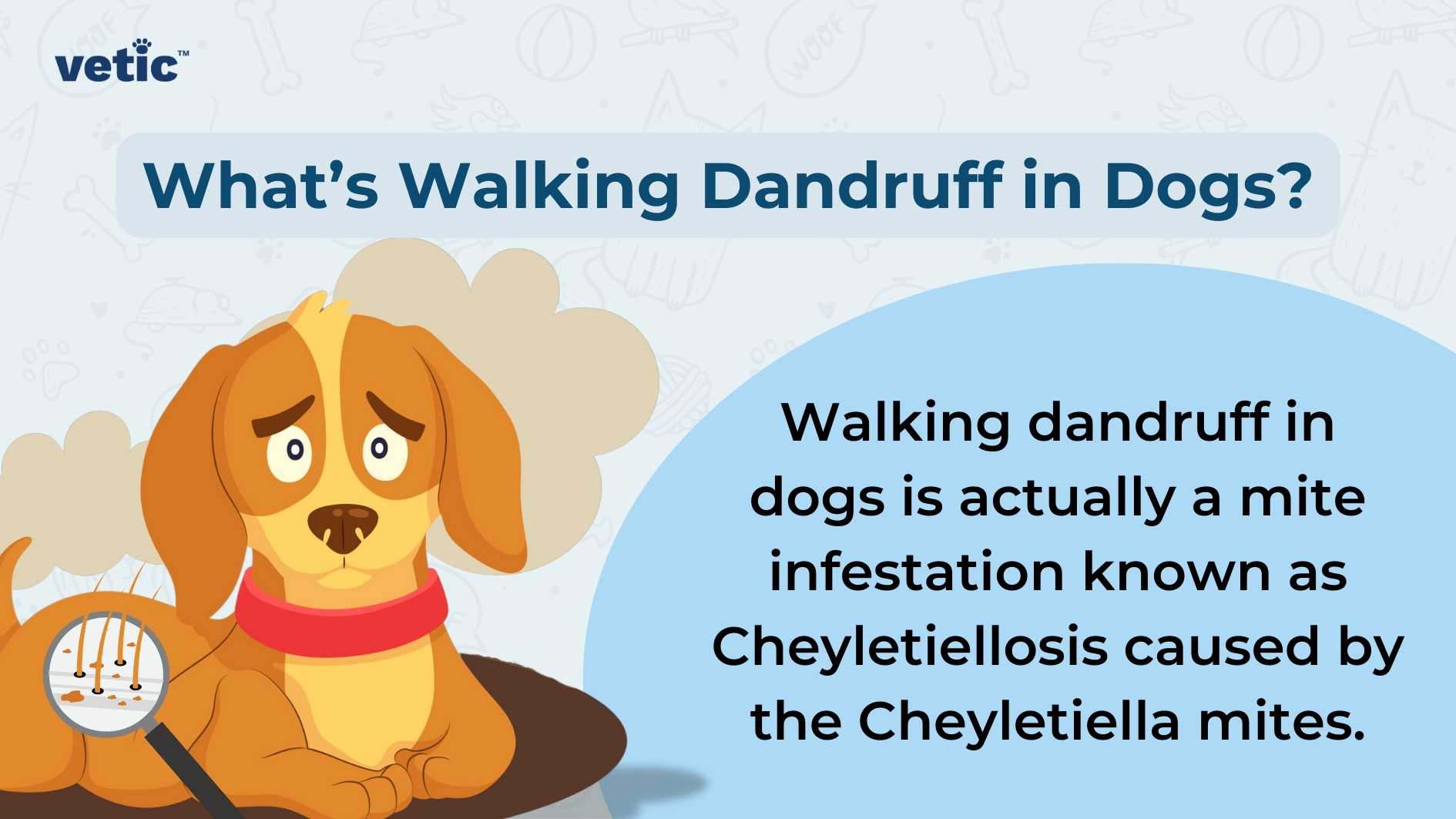
If one of your pets has been diagnosed with mites, you should talk to your veterinarian extensively about mites management and prevention at home.
In case the veterinarian suspects the cause of your dog’s dandruff to be allergies, you may need to rely on an exclusion diet for the time-being. Switching to hypoallergenic dog food also helps in such situations.
Sadly, diseases and disorders such as Cushing’s, hypothyroidism and diabetes mellitus cannot be cured overnight. These are all chronic conditions and they can be managed prudently with proper diet, medication and lifestyle changes. Minimising the clinical signs of the underlying disorder often resolves skin issues such as seborrhea sicca or seborrhea oleosa.
Should You Try Home Remedies for Your Dog’s Dandruff?
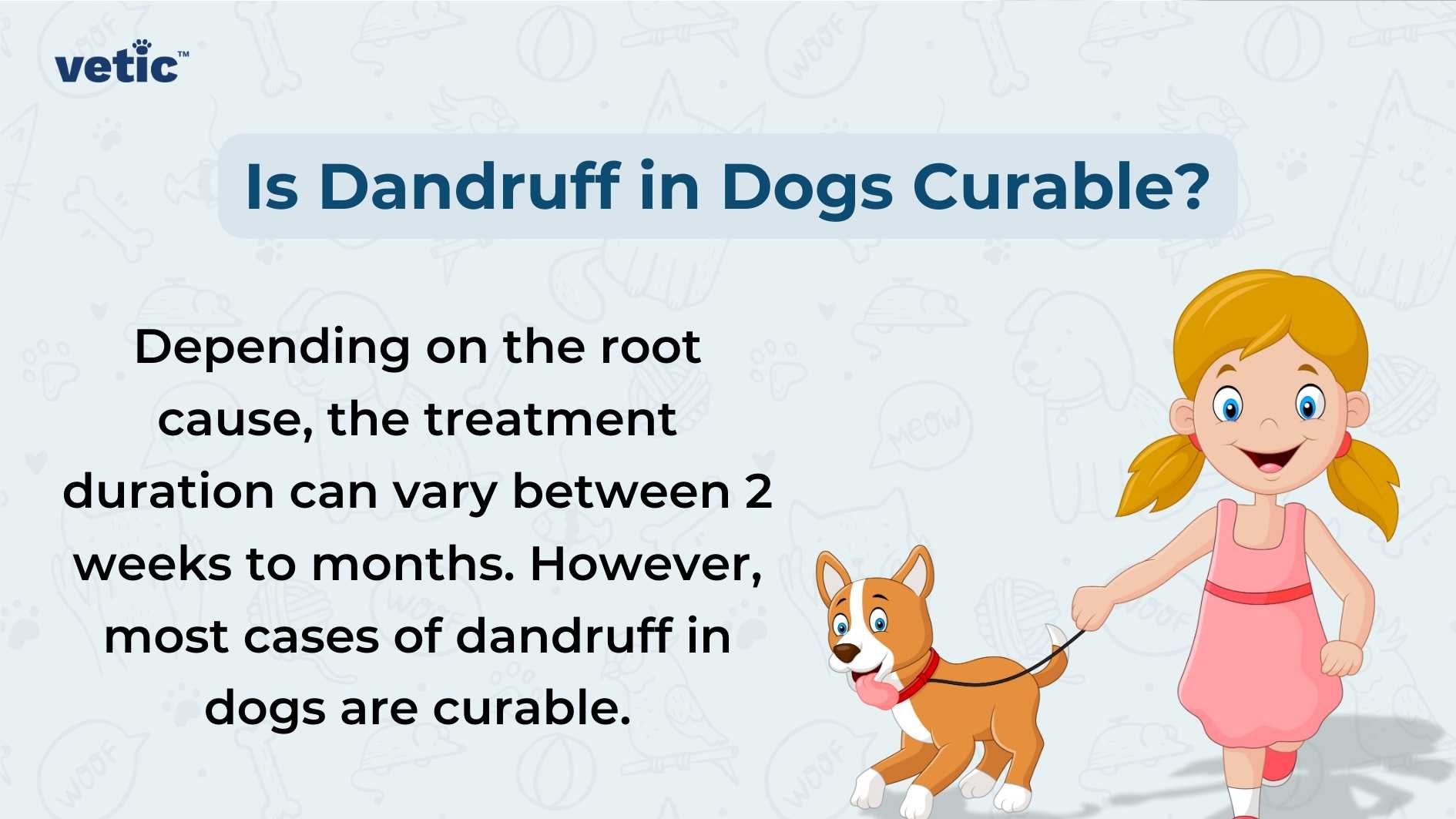
It’s tempting to treat your dog’s dandruff with home remedies, but it’s not advisable. Here’s why:
Underlying Health Issues: Dandruff in dogs can be a symptom of serious metabolic disorders, such as hypothyroidism or Cushing’s disease. Home remedies won’t address these underlying conditions, leaving them unchecked and untreated.
Sensitivity Reactions: Many home remedies involve ingredients that can cause allergic reactions or irritate your dog’s skin, potentially making the condition worse. Dogs have sensitive skin, and what might seem harmless to us can be harmful to them.
Infection Risk: Dandruff can sometimes be a sign of a fungal or bacterial infection. Treating it at home without proper diagnosis and treatment can lead to worsening of the infection.
Lack of Diagnosis: Without a veterinarian’s expertise, it’s easy to misdiagnose the cause of your dog’s dandruff. Treating the wrong condition can lead to ineffective and potentially harmful results.
Worsening Symptoms: Inappropriate home treatments can exacerbate the symptoms, causing more discomfort and possibly leading to more severe skin issues.
Masking the Real Problem: Home remedies might temporarily reduce dandruff but can mask the real problem, delaying the diagnosis and proper treatment of the underlying cause.
Professional Treatment: Veterinarians can provide targeted treatments such as medicated shampoos, supplements, or prescription medications that are safe and effective for treating dandruff and its underlying causes.
Dietary Needs: Dandruff can sometimes be linked to nutritional deficiencies or allergies. A veterinarian can recommend dietary changes or supplements that can help address the issue from the inside out.
If you see your dog scratching or nibbling too much. If you notice white flakes near their back or flank, you should take your dog to the veterinarian once to find out why they have dandruff. Once you know the cause, you can easily treat it and make it go away within weeks!

